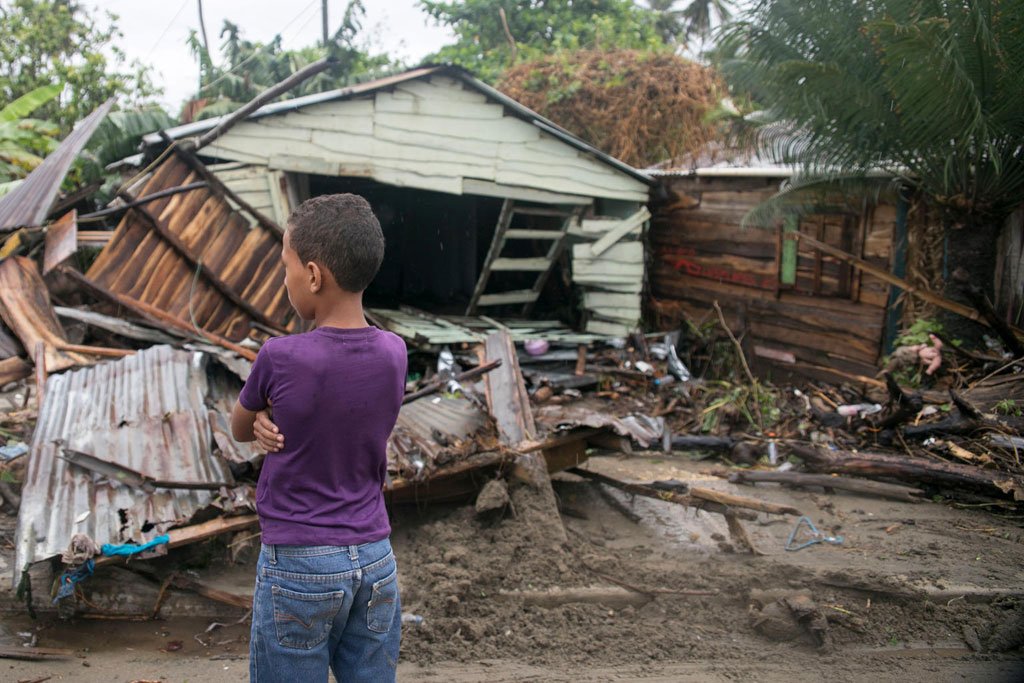The health impact of Hurricane really consists of two parts – injuries and deaths caused by the actual impacts of the storm and then the follow-on impact of the damage caused by the storm. The damage is what will really cause harm. Storm damage to property and infrastructure will be expensive; estimates are running around 250 billion dollars in the US alone – but actual lives lost due to immediate storm damage should be pretty low.
People know now to evacuate or hunker down in safety.
Post-storm damage, however, will lead to waterborne infections, heat-related illnesses, and the worsening of chronic medical conditions. People will die.
So far, hurricane Irma has caused 30 deaths. This includes 24 in the Caribbean and six in Florida. It has not been documented yet, but the evacuation effort will also cause injuries and possibly deaths. Hospital patients who are evacuated will see a steep reduction in their quality of health care, or no health care at all. That will have consequences, which may well be fatal to medically fragile patients.
After the hurricane is when it really gets bad. Not so much the immediate aftermath. We know from experience that it takes 24-48 hours for people to get help, even in countries with strong emergency response systems. However, hurricane injuries will generally fall into the category of immediately fatal – people lost in the storm or killed by flying objects – or injuries that can wait 48 hours for care without serious degeneration.
The infrastructure damage is where the most serious health impact occurs. After the storm has moved on and the winds has died down, it will take weeks or even months for households to have power again. It will take at least a year for most places to rebuild. In many places it will take far longer; parts of Florida took 20 years to fully recover from Hurricane Andrew. That loss of infrastructure has health consequences.
1) Waterborne Illness
Right now, three and a half million people are without power in the Tampa area. There is a boil water advisory in place, because flood waters may have contaminated drinking water supplies. Emergency response officials recommend shutting off gas lines. How do you boil water if you don’t have electricity or natural gas? In Naples, water distribution lines have been broken by the storm. The same is true all over the Caribbean islands. Lack of clean water leads to waterborne illness. Diarrhea, for example. It’s a nuisance to a healthy adult with a working toilet. It’s a hygiene disaster in a household without a working toilet or clean water to drink — and diarrhea can be fatal to small children and the elderly. In islands where it is already present, contaminated water can also spread typhoid and even cholera.
2) Carbon monoxide poisoning
People living without central electric power resort to generators. Often, people who’ve never used a generator before. Generators need to be correctly fueled and correctly ventilated, and if used incorrectly they can cause fires, explosions, and carbon monoxide poisoning. According to the Florida Health Department, carbon monoxide poisoning accounted for 13 percent of all hurricane-related deaths in Florida in 2005.
3) Environmental Contaminants
Everything from battery acid to boat fuel gets thrown around by hurricane winds. When the floodwaters recede, they leave the land contaminated with pollutants. More than 40 superfund sites released contaminants because of Hurricane Harvey. We are unlikely to see deaths from environmental contamination, but those areas that have survived hurricanes will see an increase in chronic illness and allergies caused by contamination.
4) Mosquito borne illnesses like Zika and Dengue
Floodwaters recede but thousands of pools of standing water remain. These are ideal breeding habitats for mosquitoes. After a hurricane, affected areas have consistently seen an increase in mosquito populations – and the diseases that mosquitoes bring. In Florida those diseases will be dengue fever, and Zika virus. In the Caribbean islands, the list also includes chikungunya, and, in the Dominican Republic and Haiti, malaria.
5) Loss of Health Care
The biggest impact on health, though, is going to come from the loss of access to health care. All of the health problems that existed before the hurricane’s strike will continue to exist afterward – without the infrastructure to support the healthcare system. Hospitals with no water and damaged walls can’t treat cancer patients or heart attack victims. Crucial supply lines of medications are disrupted, and in many cases even a 24-hour wait can be harmful or fatal. We know that in Yemen more people have died from the closure of the airport than the fighting itself. Damage to roads and airports all over Florida and the Caribbean will also restrict access to essential medical treatment.
What’s not going to happen – cholera, typhoid, plague
Finally, there are a few things that won’t happen. If cholera isn’t already present, it won’t appear out of nowhere because of a hurricane. Plague is spread by rats, not water, and it’s not present in the Irma-affected parts of the world. Typhoid is a waterborne illness, and it may spread in the Caribbean countries that already see cases, but it’s not going to appear in Florida because of a storm.
We do know from past experience that the days and weeks following a hurricane can have as profound an impact on people’s health than during the storm itself. From Barbuda to Florida, millions of people are still very much at risk despite the storm’s passing.
